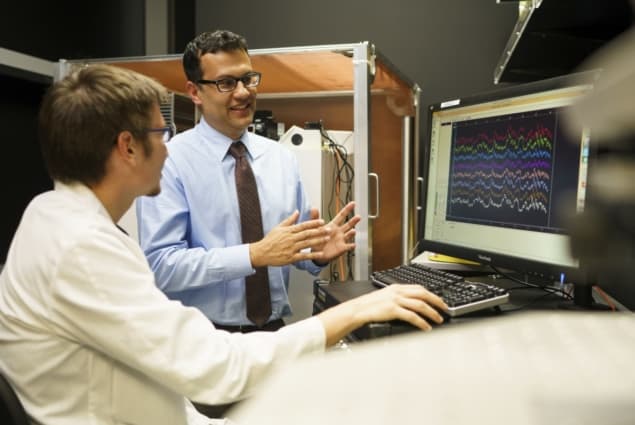
Brain–computer interfaces (BCIs) offer the potential for people with severe motor disabilities to control external assistive devices with their mind. Current BCI systems are limited, however, by the need for daily recalibration of the decoder that converts neural activity into control signals. Researchers at the UC San Francisco Weill Institute for Neurosciences have now employed machine learning to help an individual with tetraplegia learn to control a computer cursor using their brain activity, without requiring extensive daily retraining.
To record neural activity, the team used a 128-channel electrocorticography (ECoG) implant, a pad of electrodes that’s surgically placed on the surface of the brain. Already approved for seizure monitoring in epilepsy patients, ECoG arrays provide greater long-term stability than the pincushion-style arrays of sharp electrodes used in previous BCI studies, which are more sensitive but tend to move or lose signal over time.
“The BCI field has made great progress in recent years, but because existing systems have had to be reset and recalibrated each day, they haven’t been able to tap into the brain’s natural learning processes,” explains senior author Karunesh Ganguly. “It’s like asking someone to learn to ride a bike over and over again from scratch.”

The researchers developed a BCI algorithm that uses machine learning (based on an adaptative Kalman filter) to map the neural activity recorded by the ECoG electrodes to the user’s desired cursor movements. Over a period of roughly six months (two months after ECoG implantation), they conducted experiments to assess two approaches for adaptation of this decoder algorithm as the user learns control.
First, they tested the existing practice of resetting the algorithm each day. Here, the participant imagined movements of his neck and right wrist while watching a cursor move across the screen, and the algorithm gradually updated itself to match the cursor’s movements to the generated brain activity. This daily initialization, however, could require hours for the participant to master cursor control; some days, he could not achieve control at all.
Next, the researchers examined an approach called long-term closed-loop decoder adaptation (CLDA), in which decoder weights from the previous day’s session are used for the current session, without resetting the algorithm each day. They found that continued interplay between the participant’s brain signals and the algorithm resulted in continuous improvements in performance over many days.
When the team reset the BCI algorithm after several weeks of continuous learning, the participant rapidly re-established the same patterns of neural activity required to control the device – effectively retraining the algorithm to its former state. “Once the user has established an enduring memory of the solution for controlling the interface, there’s no need for resetting,” says Ganguly. “The brain just rapidly convergences back to the same solution.”
The researchers next examined whether long-term CLDA could enable long-term stable performance without the need for retraining or recalibration – the so-called “plug-and-play” performance that could enable broader use of BCIs. They found that once expertise was established, the participant could simply begin using the BCI each day. His performance did not decline over 44 days without retraining, and he showed little performance decline after days without practicing.
At this stage, the participant was also able to “stack” additional skills, such as clicking a virtual button, without impacting his ability to control the cursor. To differentiate clicking from cursor control, the researchers trained a linear support vector machine (SVM). “One of the main innovations was the rate at which the Kalman filter and SVM parameters were adapted across days in order to track user learning and neural plasticity,” Ganguly notes.

Designs on a high-performance motor BCI
Ganguly and colleagues conclude that by leveraging the stability of ECoG interfaces and neural plasticity, this approach offers reliable, stable BCI control. This stability may prove even more important for long-term control of more complex robotic systems such as artificial limbs – a key goal of the next phase of this research.
The team is now in the process of enrolling the next subject, says Ganguly. “We are also developing new approaches to increasing communication rates; this involves more sophisticated algorithms and using a denoised decoding of neural activity. And we are testing control of a six degrees-of-freedom robotic arm – we currently have a simulation in a physics engine,” he tells Physics World.
The results are reported in Nature Biotechnology.
